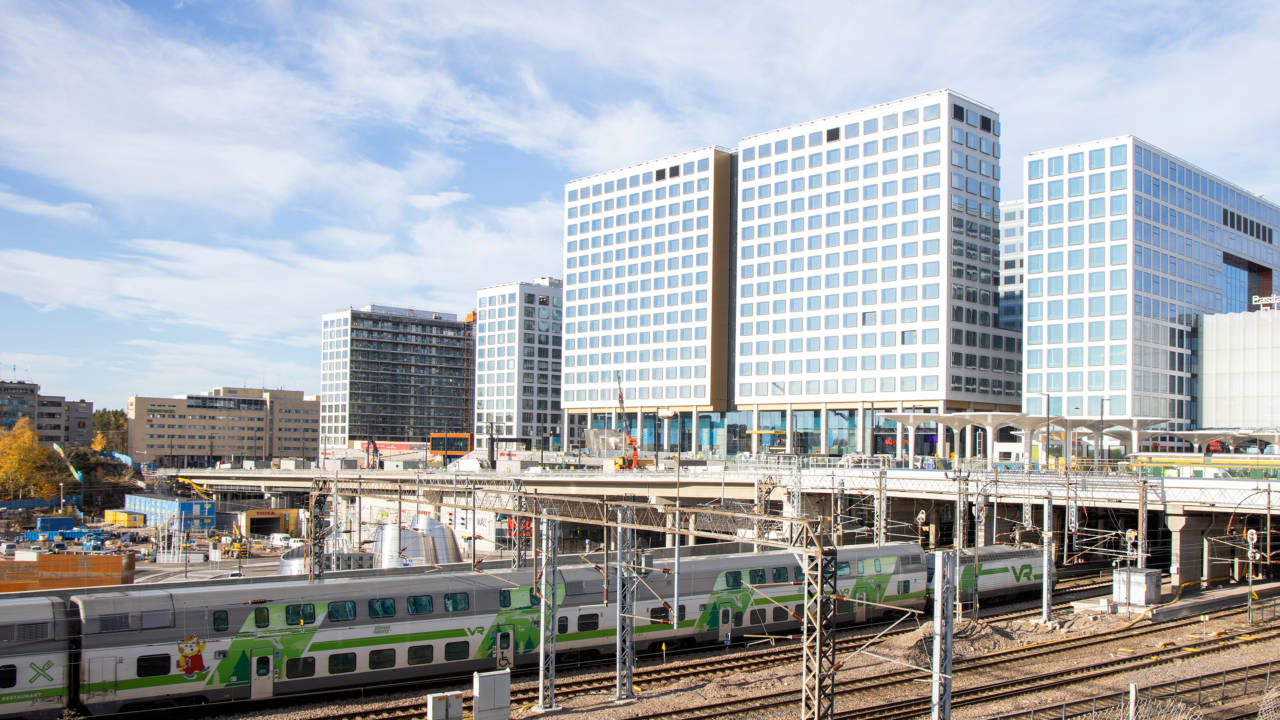Developing actions for TEN-T stand for better connectivity and competitiveness of Helsinki-Uusimaa

According to current plans, the Trans-European Transport Network TEN-T will cover the entire continent by 2050. New outlines for the network are being drawn right now, and the European Council and Parliament are processing a regulation proposal. According to the view of the Helsinki-Uusimaa Regional Council, developing the network means strengthening the connectivity and competitiveness of our Region. However, the regulation proposal also includes some strict and challenging quality criteria.
The Trans-European Transport Network (TEN-T) policy addresses the implementation and development of a Europe-wide network of railway lines, roads, inland waterways, maritime shipping routes, ports, airports and railroad terminals. The Core Network includes the most vital connections, linking the most important nodes.
The objective of the TEN-T policy is to facilitate sustainable mobility for passengers and freight across Europe by high-quality standards and to strengthen social, economic and territorial cohesion. It also aims at smooth flows of transport between the EU member states. The target year is 2050. To improve the connectivity and competitiveness, the Helsinki-Uusimaa Council supports these aims and considers it important to develop and also gain from the network.
The guidelines of the TEN-T are set by an EU Regulation. The Connecting Europe Facility (CEF) is a key EU funding instrument. It supports the development of interconnected networks in the fields of transport, energy and digital services. Such infrastructure projects always call for national funding. The current TEN-T policy is based on a regulation from 2013, but it is being revised to better fit the new focal points of the European Commission.
A proposal for new TEN-T regulation in processing
In December 2021, the European Commission issued its regulation proposal for the development of the TEN-T. This legislative proposal for a revision of the regulation upon union guidelines for the TEN-T is a key action of the European Green Deal and the Sustainable and Smart Mobility Strategy. The new regulation is expected to come into force in 2024. Currently, it is in processing at the European Council and the European Parliament.
In this new situation created by the coronavirus pandemic and the war of aggression in Ukraine, the strategic aims of furthering sustainable development and the European resilience to crisis are much weightier than before. The significance of sustainable mobility is only growing, as is the importance of developing a comprehensive European transport area. One of the focal points in the EU Sustainable and Smart Mobility Strategy is to improve the resilience to disruptions. The proposal given for updated guidelines plays a major role when creating a well-connected, multimodal European traffic area and infrastructure, meaning that it is covering different means of transport.
The current TEN-T comprises two network ‘layers’ and target years. The first layer is the Core Network with the most important connections and linking the most important nodes. It is to be completed by 2030. The second is the Comprehensive Network covering all European regions and is to be completed by 2050. The proposal includes an intermediate new deadline for a wider core network in 2040. It has been introduced to accelerate the completion of the most important parts of the network before the final deadline in 2050. The deadline of 2040 is in use for the strategically most substantial parts of the network.
Better railway connections and stricter quality requirements
The Helsinki-Uusimaa Council supports the key targets of the regulation proposal given by the Commission and, with certain reservations, most of the reforms mentioned in the intended new guidelines.
– When the TEN-T is being developed and built according to existing plans, the connectivity and competitiveness of our region will be improved, Senior Adviser Sakari Saarinen says.
– Helsinki as an urban node for TEN-T, at the junction of the Scandinavian-Mediterranean and the North Sea-Baltic corridors, links the Helsinki-Uusimaa Region and the whole country to the rest of Europe by important land and sea connections, as well as by the Helsinki-Vantaa International Airport.
It is of both regional and national significance that the new fast rail connections planned for Southern Finland are included in the wider core network. This makes it possible to apply for CEF funding regarding the planning and building of tracks.
The proposal for a new regulation is a very meaningful possibility for Helsinki-Uusimaa, as it is for Finland, Mr Saarinen adds.
The regulation for TEN-T with its standards have a great impact on the development of transport networks in Finland. From our national point of view, already the current regulation has some challenging requirements for the nodes of roads, railways and transports. In the regulation proposal, there are stricter demands for all different transport lane mode and nodes.
For Helsinki-Uusimaa and Finland it would be essential if the quality requirements for the transport infrastructure of TEN-T could be implemented on a local level. This is a wish for a situation when the demands in the proposal can lead to an oversizing of resources without any corresponding advantages in certain parts of the network that have less activity.
– Transport volumes in Finland are much lower than in Central Europe, so they should be considered in what is truly demanded – along with the nature of transports. It must be possible to set the service and quality in proportion to these, Mr Saarinen states.
New criteria for urban nodes
In the regulation proposal, the relevance of urban nodes and city-regions is acknowledged far more in the furthering of sustainable transport.
– The Regional Council finds it important that the definition of an urban node also covers a city-region and not only the central part of an area. In this way the whole coverage area can be included in the same development objectives.
According to the proposal, the urban nodes of TEN-T should meet the requirements of Sustainable Urban Mobility Plans (SUMPs) by 2025. Additionally, there are defined demands regarding for example the infrastructure for the distribution of alternative fuels, digital services and multimodal freight traffic terminals, which are promoted by national and regional actions, along with the markets.
The suggested Finnish urban nodes for the TEN-T in the revised guidelines are the Cities of Helsinki, Turku, Jyväskylä, Kuopio, Lahti, Oulu and Tampere. All these seven cities have all signed letters of intent for land use, transport and housing with the state and other city-regions. With this in consideration, they are all very aware of the standards included in urban transport planning.
The views of the Helsinki-Uusimaa Regional Council upon the regulation proposal in processing – both positive and negative, will be given directly to the European Commissioners and via statements given together with international partners and stakeholders.
For more information, please contact:

Sakari Saarinen
Senior Adviser
sakari.saarinen@uudenmaanliitto.fi
International transport, nature impact assessment of transport, project administration and funding programs, Scandria Alliance, drones
Take also a look at these
 News
News
23.6.2025
Helsinki-Uusimaa: EU bioeconomy must be developed within the limits of nature’s carrying capacity
The European Commission is currently preparing a new bioeconomy strategy that will set guidelines for a functioning circular economy, sustainable production, bio-based products and consumption in Europe. The Helsinki-Uusimaa Regional Council, in cooperation with the Helsinki EU Office and regional stakeholders, has prepared a position paper summarising views on the Commission's upcoming bioeconomy strategy.
 News
News
22.4.2025
Helsinki-Uusimaa stresses the importance of innovation in EU’s Vision for Agriculture and Food
In February, the European Commission published its Vision for Agriculture and Food. The Helsinki-Uusimaa Regional Council wants to actively participate in the discussion on the guiding principles of the EU's future agricultural and food policy. In cooperation with the Helsinki EU Office and stakeholders, the Helsinki-Uusimaa Regional Council has prepared a position paper that brings together our Region’s views on the Commission's vision.